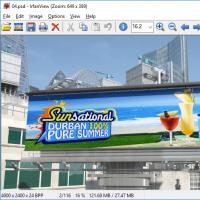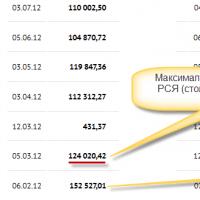Self-oscillation transistor generator plan. Damped electrical vibrations. Self-oscillations. Continuous oscillation generator (transistor). Field effect transistor generators
Free electromagnetic oscillations in a real oscillatory circuit are always damped. In order for them to be non-damping, it is necessary to create a device with the help of which the energy losses with each full oscillation in the circuit would be compensated. The so-called self-oscillations- undamped vibrations supported in the system due to permanent external source energy, and the system itself controls it, ensuring the consistency of energy supply in certain portions at the right time.
Any self-oscillating system consists of the following four parts (Fig. 1): 1) an oscillatory system; 2) a source of energy due to which losses are compensated; 3) valve - some element that regulates the flow of energy into the oscillatory system in certain portions at the right time; 4) feedback - control of the valve operation due to processes in the oscillating system itself.
A transistor generator is an example of a self-oscillating system. Figure 2 shows a simplified diagram of such a generator, in which a transistor plays the role of a "valve". The oscillating circuit is connected to the current source in series with the transistor. Emitter junction of the transistor through the coil L sv is inductively coupled to the oscillatory circuit. This coil is called a feedback coil.

When the circuit is closed, a current pulse passes through the transistor, which charges the capacitor C of the oscillatory circuit, as a result of which free electromagnetic oscillations of small amplitude arise in the circuit. The current flowing through the loop coil L, induces an alternating voltage at the ends of the feedback coil. Under the influence of this voltage, the electric field of the emitter junction periodically increases and decreases, and the transistor opens and closes. During those intervals when the transistor is open, current pulses pass through it. If the coil L sv is connected correctly (positive feedback), then the frequency of the current pulses coincides with the frequency of the oscillations that have arisen in the circuit, and the current pulses enter the circuit at those moments when the capacitor is charged (when the upper plate of the capacitor is positively charged). Therefore, current pulses passing through the transistor recharge the capacitor and replenish the energy of the circuit, and the oscillations in the circuit do not damp.
If, with positive feedback, slowly increase the distance between the coils L sv and L, then with the help of an oscilloscope you can find that the amplitude of the self-oscillations decreases, and the self-oscillations can stop. This means that with weak feedback, the energy entering the circuit is less than the energy that is irreversibly converted into internal energy. Thus, the feedback should be such that: 1) the voltage at the emitter junction changes in phase with the voltage on the circuit capacitor - this is the phase condition for self-excitation of the generator; 2) the feedback would ensure that as much energy is supplied to the circuit as is necessary to compensate for energy losses in the circuit - this is an amplitude condition for self-excitation.
The self-oscillation frequency is equal to the frequency of free oscillations in the circuit and depends on its parameters.
By reducing L and FROM, you can get high-frequency continuous oscillations used in radio engineering.
The amplitude of steady-state self-oscillations, as experience shows, does not depend on the initial conditions and is determined by the parameters of the self-oscillating system - the voltage of the source, the distance between L sv and L, loop resistance.
Literature
Aksenovich L.A. Physics in high school: Theory. Tasks. Tests: Textbook. allowance for institutions providing the receipt of obs. environments, education / L. A. Aksenovich, N. N. Rakina, K. S. Farino; Ed. K. S. Farino. - Minsk: Adukatsya i vyhavanne, 2004 .-- P. 394-395.
Slide 2
Self-oscillations are sustained oscillations in a dissipative dynamic system with nonlinear feedback, supported by the energy of a constant, that is, non-periodic external influence. Self-oscillations differ from forced oscillations in that the latter are caused by a periodic external impact and occur with the frequency of this impact, while the occurrence of self-oscillations and their frequency are determined by the internal properties of the self-oscillating system itself. The term self-oscillation was introduced into Russian-language terminology by A.A. Andronov in 1928.
Slide 3
Examples of self-oscillations are: continuous oscillations of the clock pendulum due to the constant action of the gravity of the winding weight; vibrations of a violin string under the influence of a uniformly moving bow; occurrence alternating current in multivibrator circuits and in other electronic generators with constant supply voltage; oscillation of the air column in the organ pipe, with a uniform supply of air into it; rotational vibrations of a brass clock gear with a steel axis suspended from a magnet and twisted (Gamazkov's experiment)
Slide 4
Conditions for the excitation of self-oscillations
a) the energy from the source must come in time with the oscillations in the circuit; b) the energy supplied from the source must be equal to its losses in the circuit.
Slide 5
Clock as a self-oscillating system.
Slide 6
High-frequency electromagnetic oscillator
e K B S L Lsv
Slide 7
Analogy between mechanical and electromagnetic self-oscillations
Slide 8
1. If the capacitor of the oscillating circuit is charged, then damped oscillations will appear in the circuit. 2. To prevent the oscillations from damping, it is necessary to compensate for the energy losses for each period of oscillations. 3. You can replenish energy by recharging the capacitor. 4.To do this, you must periodically connect the circuit to the source constant voltage... 5. The capacitor should be connected to the source only in those time intervals when the plate connected to the "+" pole of the source is charged "+", and the one connected to the "-" pole - "-". 6. In the loop, undamped oscillations will be established only under the condition that the source is connected to the loop in those time intervals when energy transfer is possible. 7. For this it is necessary to provide automatic operation key or transistor.
Slide 9
How to create continuous oscillations in a circuit:
Slide 10
Transistor circuit
Slide 11
Transistor generator operation
1. In order for a current to appear in the circuit and recharge the circuit capacitor during oscillations, it is necessary to inform the base "-" with respect to the emitter potential, and in those time intervals when the upper plate of the capacitor is charged "+" and the lower one - "-". This corresponds to a closed key. 2. To compensate for the loss of energy of oscillations in the circuit, the voltage at the emitter junction must periodically change sign in strict accordance with the voltage fluctuations in the circuit. 3. Feedback is needed.
Transistor generator operation. 1. In order for a current to appear in the circuit and recharge the circuit capacitor during oscillations, it is necessary to inform the base "-" with respect to the emitter potential, and in those time intervals when the upper plate of the capacitor is charged "+", and the lower one - "-". This corresponds to a closed key. 2. To compensate for the loss of energy of oscillations in the circuit, the voltage at the emitter junction must periodically change sign in strict accordance with the voltage fluctuations in the circuit. 3. Feedback is needed.
Slide 11 from the presentation "Oscillations" to physics lessons on the topic "Types of vibrations"Dimensions: 960 x 720 pixels, format: jpg. To download a slide for free for use on physics lesson, right-click on the image and click "Save Image As ...". You can download the entire Autooscillation.pptx presentation in a 136 KB zip archive.
Download presentationTypes of vibrations
“Damped oscillations” - Consequently, the movement is of aperiodic (non-periodic) character - the system, brought out of the equilibrium position, returns to the equilibrium position without making oscillations. ceases to be periodic. Topic: Damped Oscillations. Free damped oscillations in an electric oscillatory circuit; 26.27.
"Auto-oscillations" - Generator of high-frequency electromagnetic oscillations. The term self-oscillation was introduced into Russian-language terminology by A. Clocks as a self-oscillating system. Self-oscillations are sustained oscillations in a dissipative dynamic system with nonlinear feedback, supported by the energy of a constant, that is, non-periodic external influence.
"Physics" Harmonic oscillations "" - Damping coefficient. Movement from some starting point to returning to the same point. Damped oscillations are non-periodic oscillations. Charge on the capacitor plate. Maximum values. Attenuation is usually characterized by a logarithmic decrement. Another type of resonance. Equation of damped oscillations in the circuit.
"Harmonic vibrations and pendulums" - Free vibrations. Pendulum. Processes. Let's split the equation. Periodic oscillatory motion. Rotating vector concept. Energy of harmonic vibrational motion. Pendulums. Liver. Oscillatory system. Material point. Harmonic oscillation with an initial phase. Acceleration at harmonic vibrations.
“Harmonic Oscillations” - The rotating amplitude vector fully characterizes the harmonic oscillation. 3. The phase difference changes in time in an arbitrary manner. The amplitude A of the resulting oscillation depends on the difference between the initial phases. Using the vector addition rule, we find the total amplitude of the resulting oscillation: Such oscillations are called linearly polarized.
On the eve of the First World War, in scientific terms, Russia lagged significantly behind the advanced capitalist countries. In particular, there was no radio engineering industry in Russia. All radio communication equipment had to be imported from abroad, and after the revolution this source was practically closed. Under these conditions, Soviet scientists Krylov, Mandelstam, Papaleksi, Andronov conducted such deep research on the problems of forced oscillations that they were far ahead of their Western colleagues, so that the world scientific center on these problems moved to the USSR.
With free vibrations, the energy of the system decreases. In this regard, began to be widely used self-oscillations - undamped vibrations supported in the system due to permanent an external source of energy, and the system itself controls it, ensuring the consistency of the supply of energy in certain portions at the right time. The frequency and amplitude of self-oscillations are determined by the properties of the system itself and do not depend on external influences. For example, an electromagnet is located under a steel weight hanging from a spring. If the current is switched on and off alternately, the weight will begin to make forced oscillations. Try to explain what will happen next? ..
Now try to give examples of self-oscillations ...
- undamped oscillations of the clock pendulum due to the constant action of the gravity of the winding weight;
- vibrations of a violin string under the influence of a uniformly moving bow;
- oscillation of the air column in the organ pipe, with a uniform supply of air into it;
- rotational vibrations of a brass clock gear with a steel axis suspended from a magnet and twisted
- the formation of turbulent flows on the rifts and rapids of rivers;
- The voices of people, animals and birds are formed due to self-oscillations that occur when air passes through the vocal cords.
The most common mechanical self-oscillating system is the pendulum clock. In 1657, the Dutch physicist Christian Huygens proposed using the isochronism of a pendulum to create a uniform movement of the hand on a clock. The device proposed by Huygens, in its main features, has survived to this day: a pendulum, a raised load, an anchor and a running wheel. Note that, in general, the pendulum moves freely, receiving two shocks per period. Oscillations arise and are supported by the oscillating system itself, that is, they are self-oscillations. For many self-oscillating systems, the main elements are characteristic: the oscillating system itself, the energy source, the "valve" (regulates the flow of energy into the oscillatory system).
Using the method of analogies, let's move from a mechanical self-oscillating system to an electromagnetic self-oscillating system that generates electromagnetic oscillations. What can be used as an energy source (current source), valve (transistor), oscillatory system in electrical circuit(autogenerator)? .. How can you implement feedback between the valve and the oscillating system? .. (work with the textbook)
The principle of operation of the generator on the transistor(flash drawing "Transistor generator")
At the moment the source is connected direct current current passes through the collector circuit of the transistor, charging the capacitor of the oscillatory circuit. Free electromagnetic oscillations will appear in the circuit. Since the coil of the oscillatory circuit is inductively connected to the feedback coil, its changing magnetic field will cause a variable EMF in the feedback coil of the same frequency as the oscillations in the circuit. This EMF, when applied to the base-emitter section, will cause a ripple of current in the collector circuit. Since the frequency of these pulsations is equal to the frequency of electromagnetic oscillations in the circuit, they recharge the capacitor of the circuit and thereby maintain a constant amplitude of oscillations in the circuit.
Observation of the change in the shape of the oscillogram from the frequency and amplitude of oscillations
I suggest you do a little research on electromagnetic oscillations of sound frequency. What do we need for this? .. Sound generator and oscilloscope! But not simple, but ... virtual! Therefore, you need a couple more computers for your mini-laboratories.
We divide into 2 groups to study the dependence of the vibration mode on their 1) frequency and 2) amplitude.
And since we will be working with a sound generator, please remind me of the range of audible sound frequencies? .. (flash drawing "Audio frequency ranges")
Group 1 will work in the acoustic (audible) range of sound frequencies.
For group 2, there are no restrictions in the range of amplitudes.
Get to work! ..
The results of observations of the dependence of the form of oscillations on their frequency:
Guys, look at what an unusual picture gallery we have! Now the sound can be enjoyed not only by our hearing organs, but also by our eyes! And the following words will not seem strange: “Have you seen a new melody yet? Look how beautiful she is! "
In our mini-study we applied sound generator... What do we know about him? .. What other generators are there? ..
« Physics - grade 11 "
Forced oscillations are caused by alternating voltages generated by generators in power plants.
Such generators cannot produce the high frequency vibrations required for radio communications? since this would require a very high rotor speed.
High frequency oscillations are obtained, for example, using a transistor generator.
Self-oscillating systems
Usually, continuous forced oscillations are maintained in the circuit by the action of an external periodic voltage.
But other ways of obtaining sustained oscillations are also possible.
For example, there is a system in which free electromagnetic oscillations can exist, with a source of energy.
If the system itself regulates the flow of energy into the oscillatory circuit to compensate for energy losses on the resistor, then undamped vibrations.
Systems in which sustained oscillations are generated due to the flow of energy from a source within the system itself are called self-oscillating... Continuous oscillations that exist in a system without external periodic forces acting on it are called self-oscillations.
A transistor generator is an example of a self-oscillating system.
It consists of an oscillatory circuit with a capacitor of capacitance C and a coil of inductance L, an energy source and a transistor.
How to create continuous oscillations in a circuit?
To prevent the electromagnetic oscillations in the circuit from damping, it is necessary to compensate for the energy losses for each period.
You can replenish the energy in the circuit by recharging the capacitor.
To do this, you must periodically connect the circuit to a constant voltage source.
The capacitor should be connected to the source only in those intervals when the plate connected to the positive pole of the source is positively charged, and the one connected to the negative pole is negatively charged.
Only in this case the source will recharge the capacitor, replenishing its energy.
If the key is closed at the moment when the plate connected to the positive pole of the source has a negative charge, and the one connected to the negative pole is positive, then the capacitor will be discharged through the source. In this case, the energy of the capacitor will decrease.

A constant voltage source permanently connected to the capacitor of the circuit cannot support continuous oscillations in it, just as a constant force cannot support mechanical oscillations.
During half of the period, energy enters the circuit, and during the next half of the period it returns to the source.
In the circuit, undamped oscillations will be established only under the condition that the source is connected to the circuit in those time intervals when the transfer of energy to the capacitor is possible.
To do this, it is necessary to ensure the automatic operation of the key.
At a high vibration frequency, the key must have reliable performance. A transistor is used as such a practically inertialess switch.

A transistor consists of an emitter, base and collector.
The emitter and collector have the same main charge carriers, such as holes (p-type semiconductor).
The base has the main carriers of the opposite sign, for example electrons (n-type semiconductor).
Transistor generator operation

The oscillating circuit is connected in series with the voltage source and the transistor so that a positive potential is applied to the emitter and a negative potential to the collector.
In this case, the emitter-base transition (emitter junction) is direct, and the base-collector junction (collector junction) is reversed, and no current flows in the circuit.
This corresponds to an open key.
In order for a current to appear in the circuit of the circuit and recharge the capacitor of the circuit during oscillations, it is necessary to inform the base of a potential negative with respect to the emitter, and in those intervals when the upper plate of the capacitor is positively charged and the lower one is negative.
This corresponds to a closed key.
In the intervals when the upper plate of the capacitor is charged negatively, and the lower plate is positively charged, there should be no current in the circuit of the circuit. For this, the base must have a positive potential relative to the emitter.
Thus, to compensate for the loss of energy of oscillations in the circuit, the voltage at the emitter junction must periodically change sign in strict accordance with the voltage fluctuations on the circuit.
Needed Feedback.
Here the feedback is inductive
A coil with inductance L CB is connected to the emitter junction, which is inductively coupled to the coil with inductance L of the circuit.
Oscillations in the circuit due to electromagnetic induction excite voltage fluctuations at the ends of the coil, and thus at the emitter junction.
If the phase of the voltage fluctuations at the emitter junction is selected correctly, then the "jolts" of the current in the circuit circuit act on the circuit at the required time intervals, and the oscillations do not damp.
On the contrary, the amplitude of the oscillations in the circuit increases until the energy losses in the circuit are precisely compensated by the input of energy from the source.
This amplitude is the greater, the higher the voltage of the source.
An increase in voltage leads to an increase in the "jolts" of the current recharging the capacitor.
Transistor generators are widely used not only in many radio engineering devices: radio receivers, transmitting radio stations, amplifiers, computers.
The main elements of a self-oscillating system
Using the example of a transistor-based generator, one can single out the main elements characteristic of many self-oscillating systems.

1. A source of energy due to which sustained oscillations are maintained (in a transistor-based generator, this is a constant voltage source).
2. An oscillatory system is that part of a self-oscillating system in which oscillations occur directly (in a generator on a transistor this is an oscillatory circuit).
3. A device that regulates the flow of energy from a source to an oscillatory system - a valve (in the considered generator - a transistor).
4. A device that provides feedback, with the help of which the oscillating system controls the valve (in the generator on the transistor - inductive coupling of the coil of the circuit with the coil in the emitter-base circuit).
Examples of self-oscillating systems
Self-oscillations in mechanical systems: a clock with a pendulum or a balance wheel (a wheel with a spring that makes torsional oscillations). The source of energy in the watch is the potential energy of a raised weight or a compressed spring.
Self-oscillating systems include an electric chopper bell, whistle, organ pipes, and more. Our heart and lungs can also be thought of as self-oscillating systems.
 The best programs for reading and editing: do without Photoshop psd extension than open
The best programs for reading and editing: do without Photoshop psd extension than open Why is my phone charging slowly?
Why is my phone charging slowly? How to add a folder to an exception in Kaspersky How to add exceptions to a program in Kaspersky
How to add a folder to an exception in Kaspersky How to add exceptions to a program in Kaspersky Installing Kaspersky Security Center Installing the Administration Server kaspersky security center 10
Installing Kaspersky Security Center Installing the Administration Server kaspersky security center 10 How to take a screenshot on a computer: All possible ways How to take a screenshot of a photo
How to take a screenshot on a computer: All possible ways How to take a screenshot of a photo Screenshot - what is it and how to make a screen Ways to take a screenshot on a computer
Screenshot - what is it and how to make a screen Ways to take a screenshot on a computer Free renewal of the Kaspersky Anti-Virus license Suspension of protection from Kaspersky Gadget
Free renewal of the Kaspersky Anti-Virus license Suspension of protection from Kaspersky Gadget